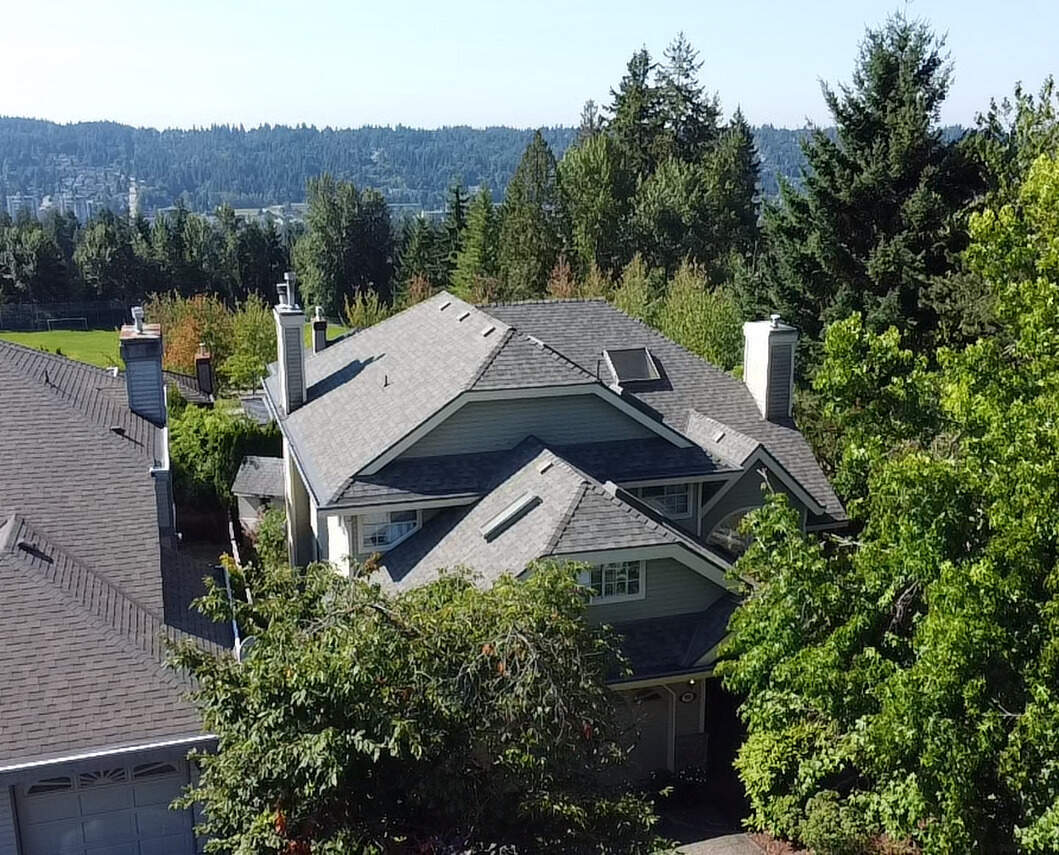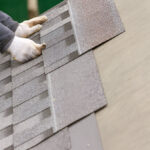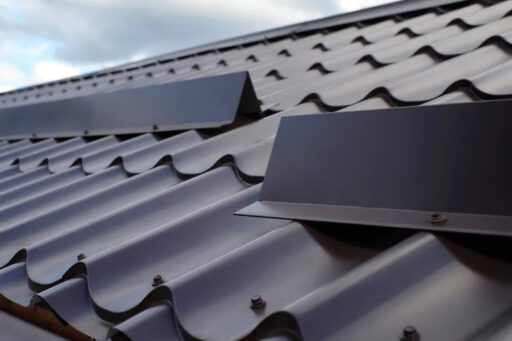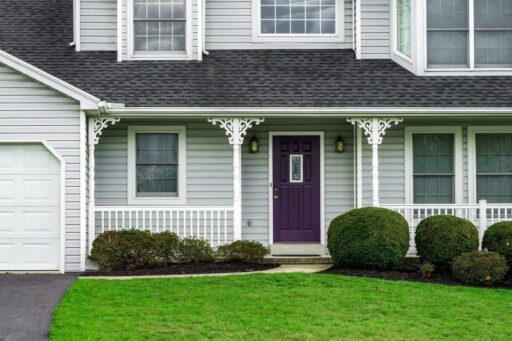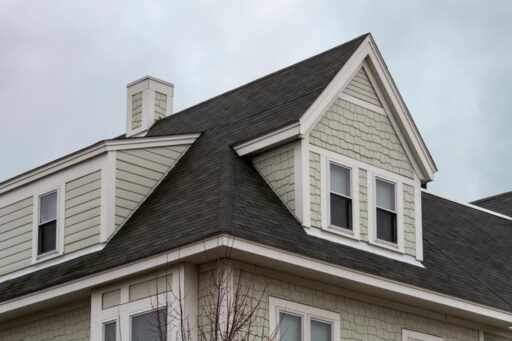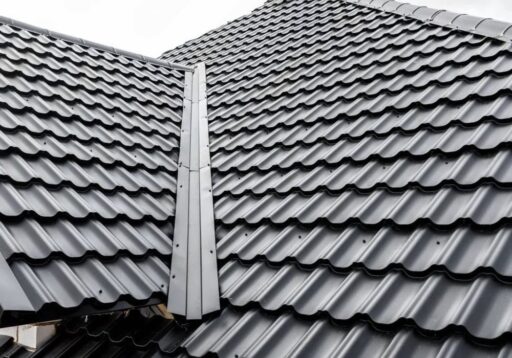Your roof material choice has a big impact on how well your home stands up to weather. We’ll take a deep dive into two popular options: steel roof vs asphalt shingles. We’ll examine the good points, drawbacks, and main differences between these two top roofing picks. This breakdown will help you choose the right roof for your house.
Asphalt Shingles: A Brief History
Asphalt shingles have topped the list of roofing choices since the early 1900s. Homeowners often pick them due to their budget-friendly nature. These shingles have a base layer of felt or fibreglass, with asphalt coating to block water. Granules sit on top to shield against harsh sunlight. This timeless look has graced many houses through the years.
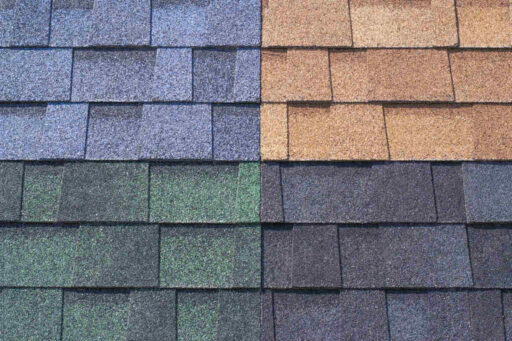
Why People Love the Low Cost
One of the main draws of asphalt shingles is their low cost. These roof coverings range from $2 to $5 per square foot, with installation adding $3 to $5 per square foot. The cheap initial expense of an asphalt shingle roof makes it an attractive option. This budget-friendly nature has contributed to asphalt shingles becoming a popular choice for homeowners looking for a roof that won’t break the bank.
Asphalt shingles come in two main types: three-tab and architectural. Three-tab shingles, which are thinner and more uniform, create a classic straight look. In contrast, architectural shingles have more thickness and depth adding texture to the roof. This variety of styles allows homeowners to choose a look that matches their taste.
The Downside: Durability Concerns
Despite their low cost, asphalt shingles don’t last long and can deteriorate. Weather takes its toll limiting their lifespan to 12 to 30 years. Moist air, rain, and temperature fluctuations speed up their wear and tear. This results in cracks, warps, and potential leaks.
Also, areas with harsh weather like hail high winds, or hurricanes create additional problems for asphalt shingles. When these shingles sustain damage in such conditions, it doesn’t just harm your roof. It can also increase your insurance premiums because insurance companies know these roofs can’t withstand severe weather.
The Steel Roofing Revolution
In the roofing materials market, steel has emerged as a robust option providing a combination of durability, longevity, and eco-friendliness. Used in industrial settings for its lasting qualities, steel roofing has now made its way to residential properties, attracting homeowners with its strength and versatility.
The Beginning of Stone-Coated Steel Roofing
In the past, homeowners often shied away from steel roofs due to their industrial appearance. However, the introduction of stone-coated steel roofing in 1957 changed the game. This innovative material combines durable steel sheets with a coating of stone particles offering a range of hues, textures, and profiles that mimic traditional roofing materials like asphalt shingles, clay tiles, and wood shakes. When you compare steel roof vs asphalt shingles, steel’s ability to endure tough conditions like high winds and fire makes it a strong contender for long-term roof investments.
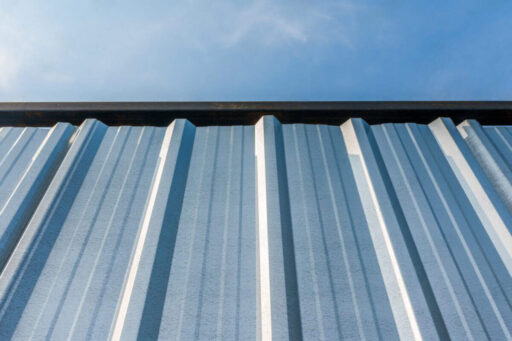
Steel roofing stands out because it’s tough and lasts a long time. These roofs can handle the worst weather, including strong winds, hail, fire, and earthquakes. They also resist damage from salty air and moisture. Steel roofs last 40 to 70 years often outliving their warranties. This makes them much stronger than asphalt shingles.
Energy Efficiency and The Cost Issue
Steel roofs don’t just stick around for ages. They also cut down on energy use and do the planet a favour. They bounce heat off houses, so your AC doesn’t have to break a sweat. This can mean big bucks saved on power bills. Plus, you can recycle every bit of steel roofing, which is a win for Mother Earth and helps shrink our trash piles.
Steel roofing costs more than asphalt shingles. You may shell out between $7 and $15 per square foot for materials and between $10 and $25 per square foot to install. But this upfront investment can pay off down the road. Steel roofs endure for a long time and require minimal maintenance, often giving homeowners better value in the long run. Plus, the durability of steel roofing affects insurance premiums. Insurance companies recognize the strength of this material and may offer lower rates for homes with steel roofs in areas prone to severe weather.
Things to Consider When Choosing Between Steel and Asphalt Shingles
Just like deciding on any major home improvement, choosing between steel roofing and asphalt shingles requires you to weigh various factors. Here’s what you should think about:
- Climate and Weather Patterns: The weather where you live has a significant effect on which roofing material suits you best. If your area sees intense storms like hurricanes or hail, steel roofing might be your best bet due to its durability. In milder climates, asphalt shingles could suffice, but they don’t last as long and you might need to fix them more often.
- Roof Slope and Drainage: Your roof’s slope and water drainage have a big impact on your roofing choice. Asphalt shingles may not perform well on low-slope roofs, as standing water can speed up their deterioration. Steel roofing manages water runoff more and can withstand repeated freezing and thawing cycles. This makes it a solid option for snowy regions or areas with frequent temperature swings.
- Architectural Style and Aesthetic Preferences: Steel roofing has gotten better at mimicking traditional roofing materials. Still, some homeowners prefer the classic appearance of asphalt shingles. Your house’s style might demand a specific look, or you may want your roof to fit in with the neighbourhood. Take time to consider this when making your choice.
- How Long You Plan to Own Your Home: Your intended stay in your house plays a big role in choosing your roof. Steel roofs make sense for long-term living. They last longer and require less upkeep. But asphalt shingles might be a better fit if you plan to sell within 10 to 20 years. They cost less to install. Plus, you might not recoup the full cost of a steel roof if you move out too soon.
- Environmental Considerations: Eco-conscious homeowners often lean towards steel roofing due to its recyclability and energy-saving properties. This aligns with their values and priorities. In contrast, those who prioritize cost-effectiveness over environmental impact might prefer asphalt shingles. These shingles come with a lower upfront price tag, despite their greater environmental footprint.
The Verdict: Weighing the Pros and Cons
In the end, when considering steel roof vs asphalt shingles, steel roofs stand out for their durability, energy efficiency, and ability to handle severe weather. While asphalt shingles may offer a lower upfront cost, steel roofing provides a better long-term investment for many homeowners.
Steel roofing, on the flip side, presents a compelling argument despite its steeper initial price. It boasts unrivalled longevity, cuts down on energy use, and can result in cost savings as time goes by. It holds up well against rough weather and proves eco-friendly. This makes it attractive to homeowners looking to get a roof that will stick around for years and requires minimal maintenance.

